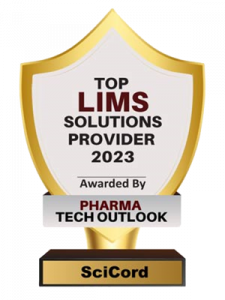Interfacing LIMS and ELN
Objective
This article aims to describe the division of functionality between ELN (Electronic Laboratory Notebook) and LIMS (Laboratory Information Management System) and the available interface options.
Why Interface LIMS and ELN
The functionality set represented by LIMS and ELN is desirable for pharmaceutical organizations with projects at or beyond phase III. Compliance, traceability, sample management, and the sheer volume of data, render paper based documentation inadequate. Hardbound notebooks, Excel workbooks, and file shares are significant compliance risks just waiting to explode at every audit.
The best solution for a company transitioning from paper to an electronic system is to select a hybrid ELN plus LIMS solution. The ELN and LIMS components in a hybrid solution are integrated by a single vendor and should provide optimum transparent communication. Most organizations do not implement hybrid solutions for a few reasons:
1) Hybrid solutions combining best of class ELN/LIMS are rare.
2) The desirability of deploying both ELN & LIMS is not initially understood.
Typically, when confronted with phase III compliance challenges, organizations choose to deploy a LIMS. Although excellent at organizing samples and results, LIMS does very little to reduce compliance/data volume issues at the bench. To address these issues. ELN functionality is required.
Functionality Distribution
A critical decision is how to apportion the functionality between ELN & LIMS. The criteria for distributing functionality:
- Group functionality used in a work session within one application to avoid users switching between systems. Switching between applications requires users to change mind sets to navigate different user interfaces. Complex communication arising from the need to refresh data between the applications can be avoided by grouping tasks.
- Utilize the best aspects of each solution.
The table below illustrates an optimum distribution of functionality. The allocation attempts to create a contiguous workflow and utilize the strengths of each solution.

In general, administrative/management functions are allocated to LIMS with bench related processes encapsulated in ELN. An underlying assumption guiding the division of functionality is that ELN will be readily available and active on laboratory benches. Laboratory functionality has been grouped within ELN to take advantage of the readily available access and to avoid inefficient transitions between applications. Allocation of functionality which is not self-evident is described in more detail below.
Configuration item definition and management (Methods, Analysis, Measurements) are handled by LIMS although these configuration items are used extensively by both ELN & LIMS. LIMS is the natural placement for configuration.
Barcode functionality must be present in LIMS to support Sample Management and in ELN for chemicals, solutions, and standards. Implementing in both solutions does increase maintenance overhead.
Work Requests are the definition of the testing or other work to be accomplished on samples and includes visualization of the status of assigned work. Work generated by stability or external sources is managed by LIMS while work originating internally is defined by ELN. Interface of Work Requests is the most complex interface task. The interface requires sharing user/group/site information in addition to sample/analysis/methods.
Chemical Inventory is allocated to ELN because the task is physically executed in laboratories.
Data File Management is provided by ELN unless an Enterprise Content Management solution is deployed for this purpose.
Notebook records, review, and lifecycle are consolidated in ELN.
Asset Management is a shared functionality. LIMS provides equipment and instrument definitions while ELN records daily check and usage information. The LIMS portion of Asset Management may be provided by a standalone Metrology application.
Interface Options
The interface options available are dependent on the two applications to be interfaced. Web Services, database views, file transfer are among the available options.
Web services are utilized to expose the persisted data of an application. Web Services are interoperable (language independent), provide a standardized protocol, and represent an economical form of communication. For these reasons, Web Services are by far the best option available and will be the focus of this discussion.

The diagram represents the data objects which must be exposed as a data service from both ELN & LIMS. Additionally, each system must be configured to consume the exposed data objects.
Data Refresh
Refresh of interfaced data is a critical component of the ELN & LIMS interface. Polling of the current state of exposed data is required each time an operation in one system requires data from the other. Polling determines if the data is stale and requires refresh. The complexity involved in polling and refresh is governed by:
- Frequency of the consuming operation requiring the exposed data.
- Variability of the exposed data.

The matrix diagram above identifies projected use and variability for each type of exposed data. Variability is measured in number of times a table is expected to change per day, where low is several changes each day and high is 10 changes or more each day.
In situations with low variability tables, refresh for each usage by the consuming application is not required. The consuming application (ELN) can simply poll to determine if a change has occurred and refresh only when necessary.
In situations with high variability, it must be assumed that the data is often stale and requires refresh. The high variability data defined above is ELN Results, ELN Sample Status, and ELN Work Requests. This data is consumed by LIMS activities such as reports and trending which are less frequent operations.
Summary
Interface between ELN and LIMS is often required for business reasons and to obtain best of class functionality. Division of functionality between ELN & LIMS is critical to avoid complexity and increase usability. Web services provide the optimum interoperability and standardization necessary for a successful interface.





Recent Comments